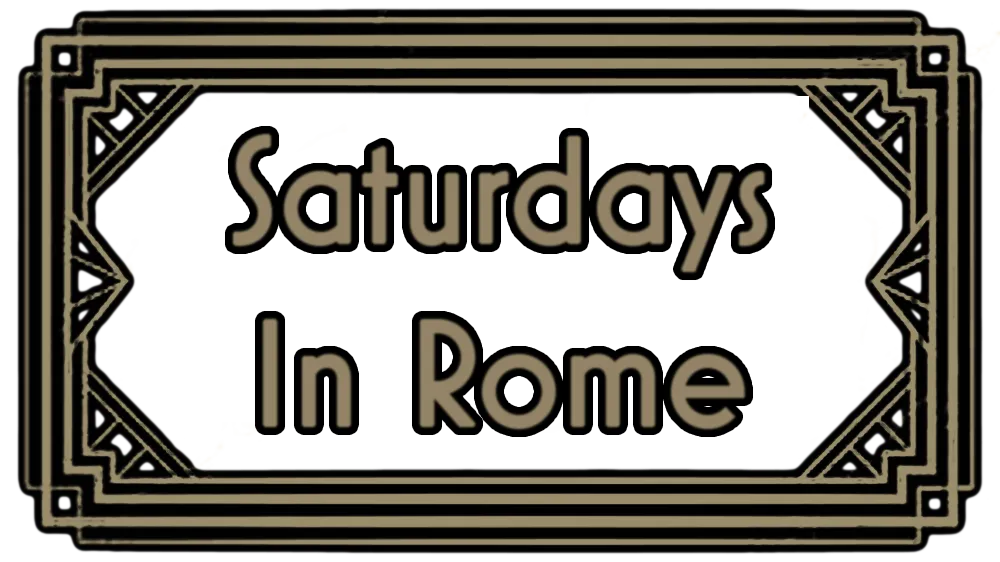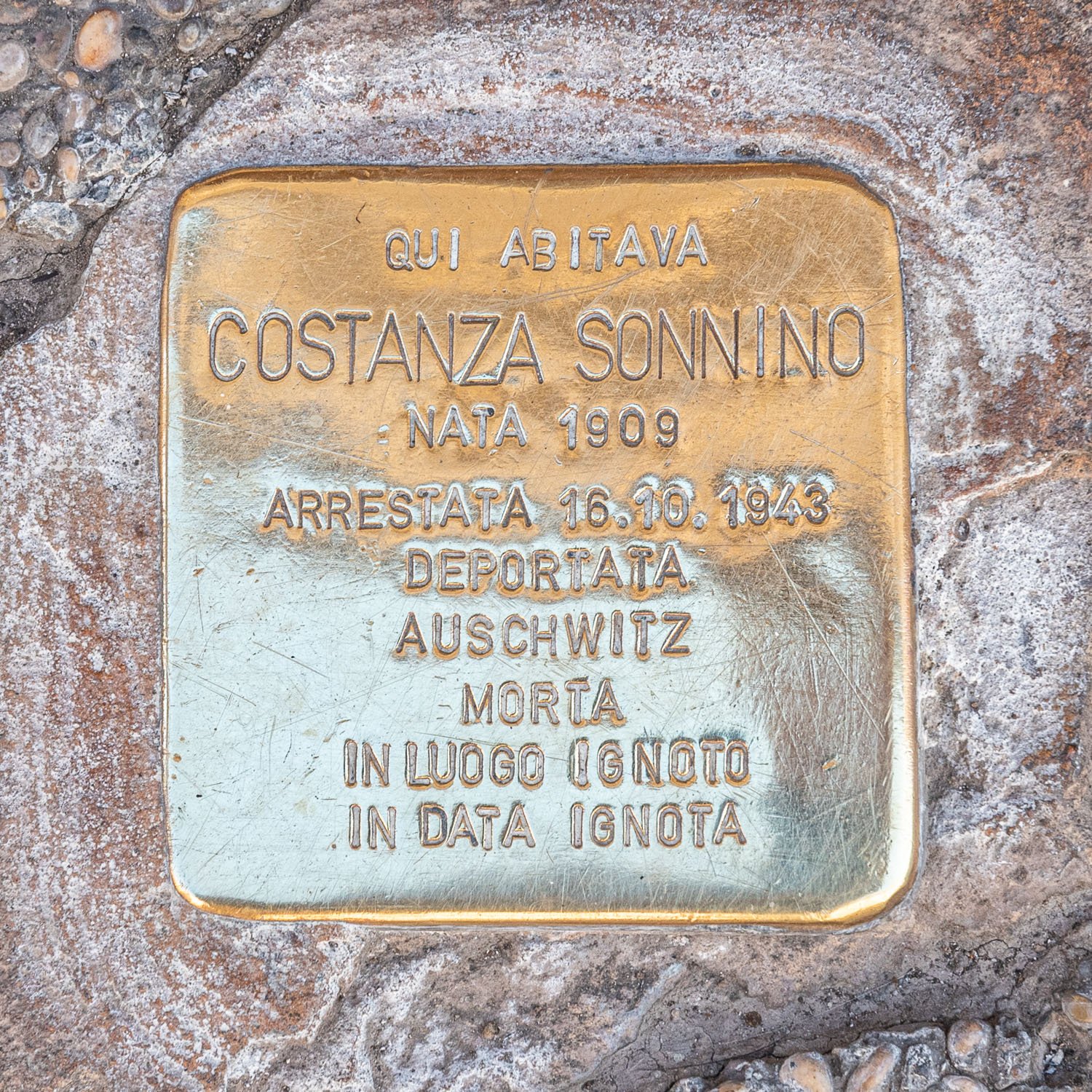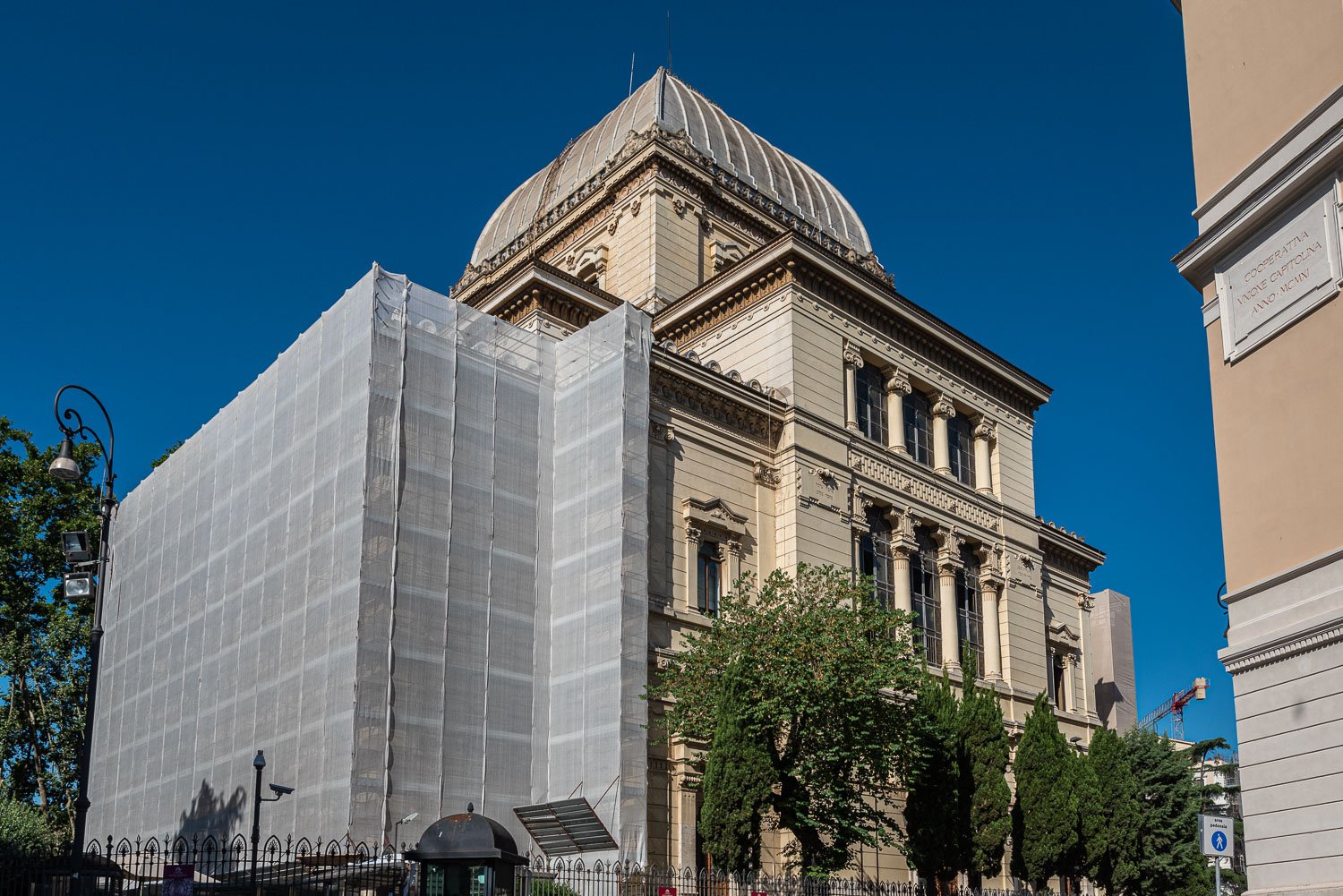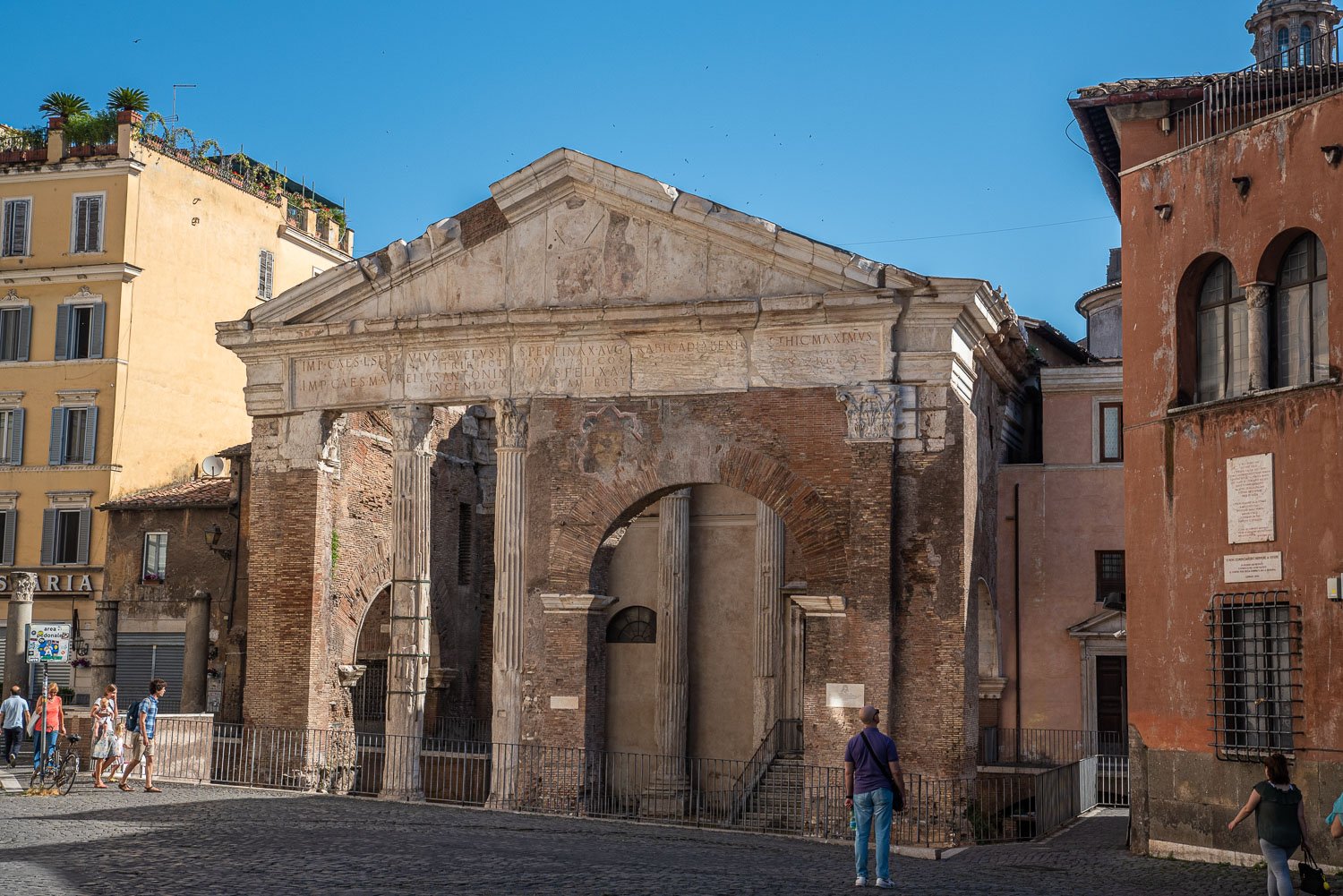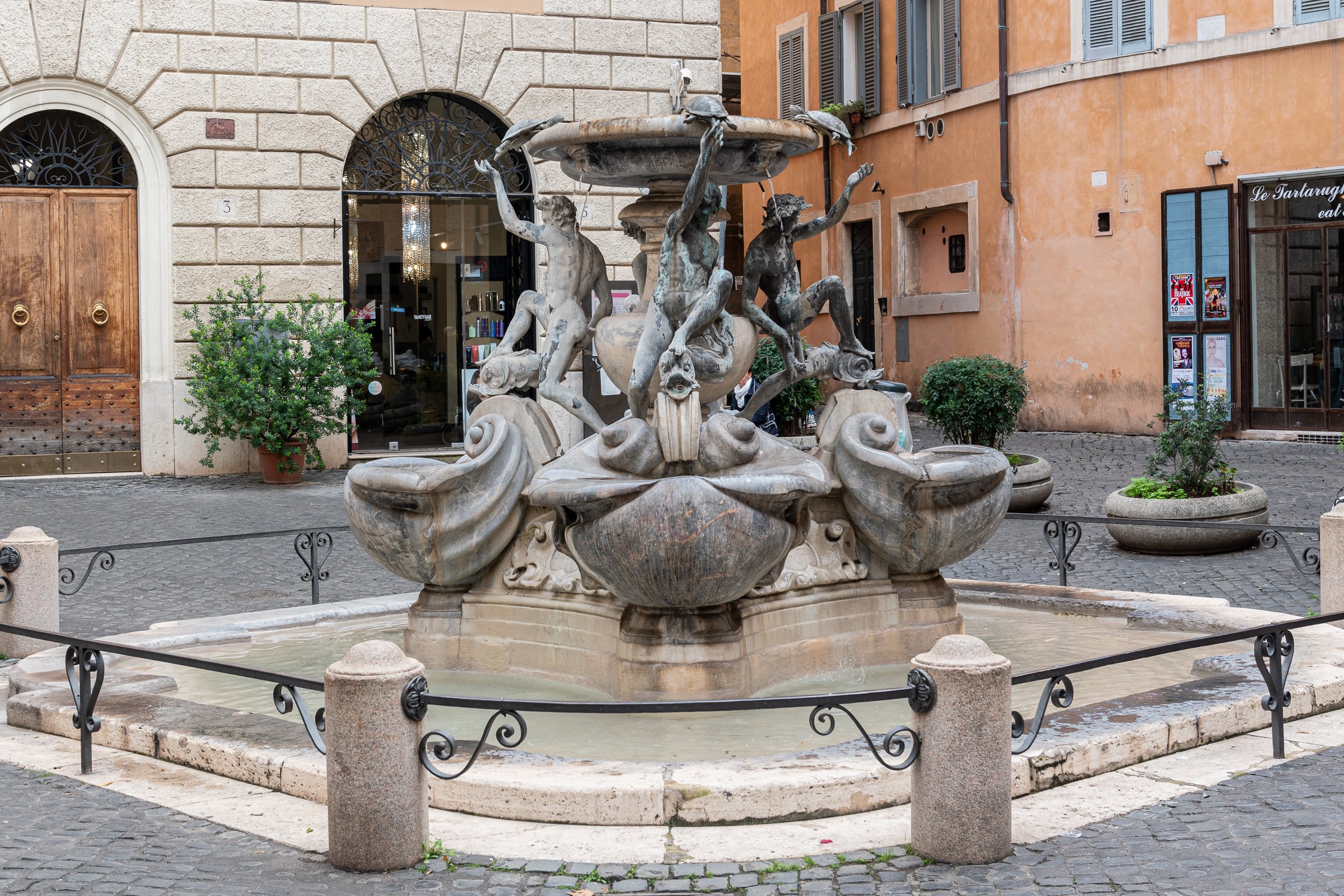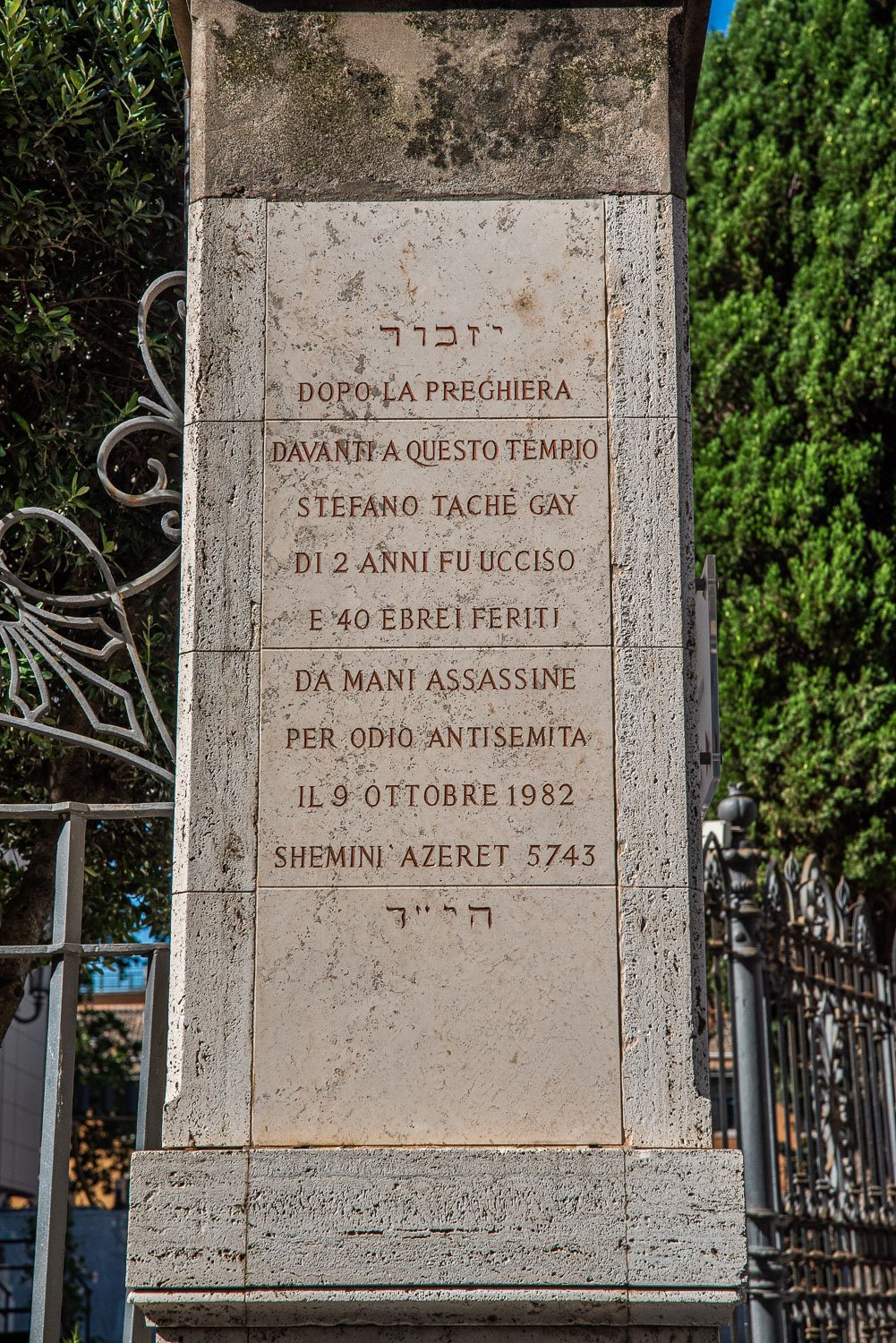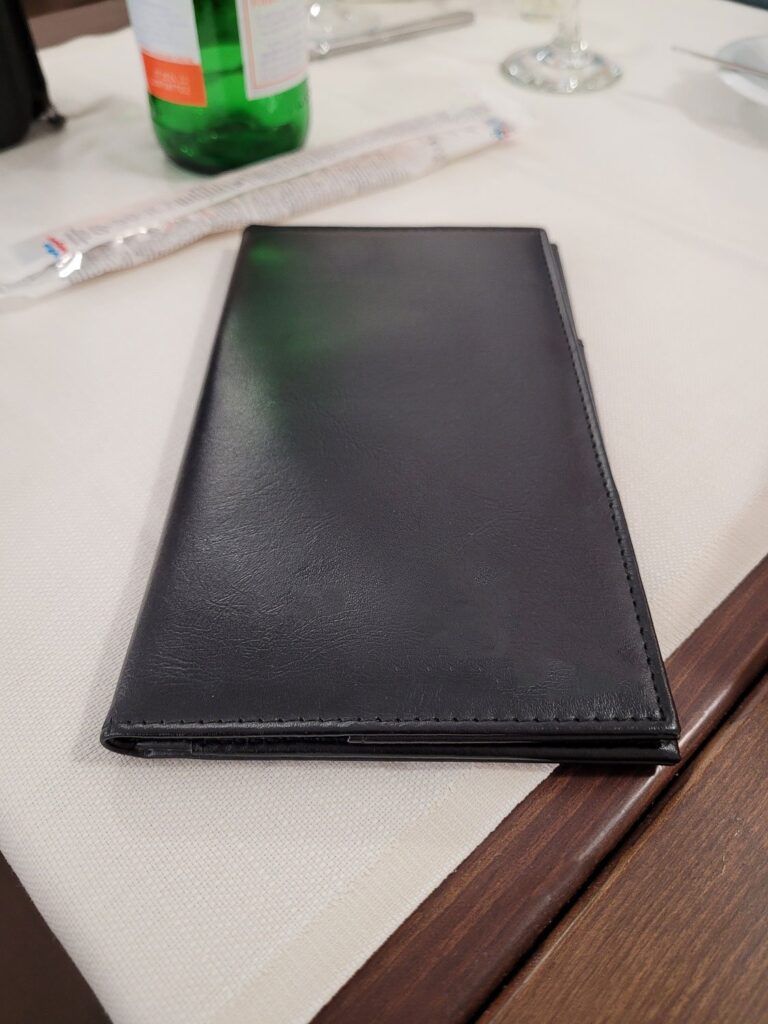Rome’s Jewish Quarter – Your Guide To The Amazing Sites
Rome’s Jewish Quarter is one of the oldest ghettos in the world, second only to the ghetto in Venice, which was the first ever built, around 40 years earlier.
The Great Synagogue, getting a facelift.
Rome’s Jewish Quarter
The Jewish community of Rome is the oldest in the world outside of Israel, with a continuous existence for more than 2000 years. In 1555 Pope Paul IV established the ghetto in Rome, choosing one of the most dilapidated and unhealthy neighborhoods of the city, where Jews are forced to live separated from the rest of the population.
The Jewish Quarter In Rome
Pope Paul IV passed a decree, called a papal bull (bolla), which revoked all the rights granted to Roman Jews and ordered the establishment of the ghetto where they were required to live. Jews were not allowed to own any property, even in the ghetto. Christian owners of houses in the ghetto could keep their property but they could neither evict the Jews nor raise rents.
Walls were built around the ghetto and initially there were two doors that were closed at sunset and reopened at dawn. If a ghetto resident was caught outside the gates at night they could be the target of persecution and prosecution by the Papacy. In addition to the requirement to reside within the ghetto, Jews had to wear a badge that made them always recognizable: a cap for men and another easily recognizable sign for women This subjected them to harassment whenever they traveled outside the walls.
On April 17, 1848, Pope Pius IX ordered the demolition of the wall surrounding the ghetto. With the proclamation of the Roman Republic in 1849, segregation was abolished and the Jews were emancipated. With the fall of the Republic, the pope himself forced the Jews to return to the neighborhood, even though it was now devoid of doors and fences. In 1870 the Jews were finally free and in the following decades the entire neighborhood was demolished and rebuilt above the river level.
What’s In Rome’s Jewish Quarter?
Pescheria Vecchia
- Via Del Portico D’Ottavia – This road evokes the former Ghetto and still today constitutes a daily reference point for the Jewish community, with the building complex rebuilt between the end of the 19th century and the beginning of the 20th century. This is the “main drag” of the neighborhood and the starting point for anyone looking to eat here. There are more restaurants around every corner, but because of its central location, the al fresco dining on this street (closed to traffic) is very popular with visitors.
- Marcello’s Theater (Teatro Marcello) – The building, started by Julius Caesar and finished by Augustus, had already finished in 17 BC when the building was used for secular games, but the dedication took place in 13 BC, to Marcello, son of Octavia.
- Turtle Fountain (Fontana Delle Tartarughe) – I’ve already written about my favorite famous fountains in Rome, so please check out that post and make sure to make a visit.
- The Great Synagogue (Tempio Maggiore) – Following the conquest of Rome by the Italian army, the Jews finally achieved full emancipation, equalization of civil rights and the possibility of erecting, after centuries of limitations, their synagogues. They decided to build one of the largest synagogues in Europe, the Tempio Maggiore, on one of the four plots of land where the Jews they had been locked up for centuries.
- The Portico of Octavia – In ancient times, this was a sort of open-air museum housing a large number of artworks and in medieval times the porticoed spaces of the monument were used for the sale of fish. The main city fish market (Pescheria Vecchia) remained active until the end of the 800’s.
Turtle Fountain in All Its Glory
The Raid On The Rome Ghetto
Calling this a Raid doesn’t really capture the horror as well as the Italian does: la spietata caccia agli ebrei, which translates to: the merciless hunt for jews. At the dawn of the October 16, 1943 the Nazis surrounded and sealed off the ghetto capturing 1,259 people, mainly members of the Jewish community, numbering 363 men, 689 women, and 207 children. They were detained by the Gestapo by force and removed from their homes. Two days later the prisoners were loaded onto a train bound for Auschwitz. Of the 1,023 Jewish deportees, only 16 survived the extermination.
Outside The Temple Marking The Murder of a 2 Year Old
Rome’s Jewish Quarter Commemoration
A number of stone plaques have been unveiled in the Rome Ghetto and at Tiburtina railway station to commemorate the arrest and deportation of the Jews of Rome in October 1943. Beyond that, an art project to honor victims of the holocaust with gold cobblestones has spread across Europe and can be seen throughout the Roman ghetto and beyond.
At the last known residence of deported Jews you can see a gold stone, called the Stumbling Stone (pietre d’inciampo), in place of the regular cobblestone with name and deportation information. A small square block of stone (10 x 10 cm), covered with shiny brass, placed in front of the door of the house where a deportee in the Nazi extermination camps had lived. The stone remembers the name, the year of birth, the day and the place of deportation, the date of death.
From the project:
“In Italy, the first Stumbling Stones were laid in Rome in 2010 and are currently found in Bolzano, Genoa, L’Aquila, Livorno, Milan, Reggio Emilia, Siena, Turin, Venice as well as numerous other smaller towns.
To explain his idea, Gunter Demnig – who personally poses the “Stumbling Stones” – took a passage from the Talmud: “A person is only forgotten when his name is forgotten”.
The objective of the “Stone of Stumbling”, an emotional and mental, not physical, stumbling block is to keep alive the memory of the victims of the Nazi-Fascist ideology in the symbolic place of everyday life – their home – at the same time inviting those who pass by to reflect on what happened in that place and on that date, so as not to forget.”
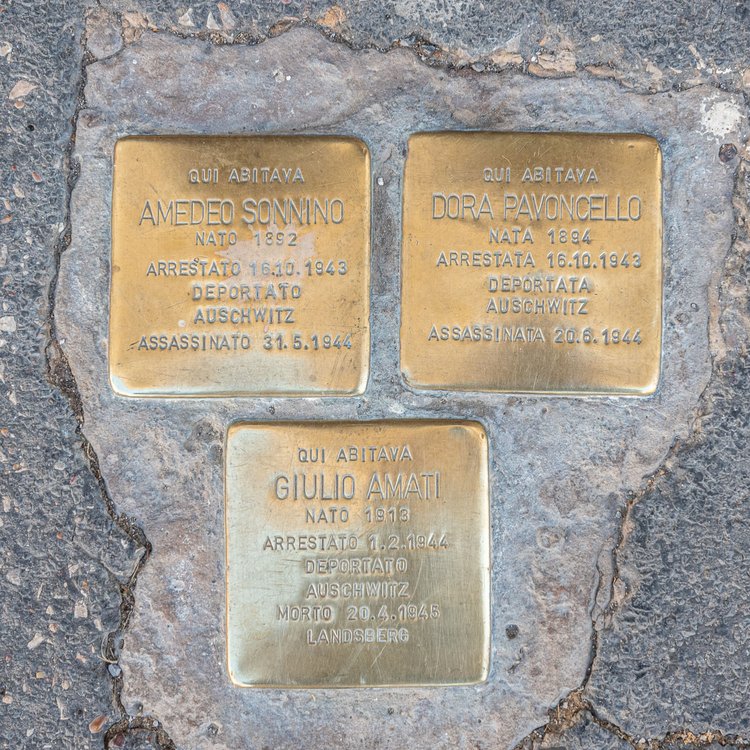
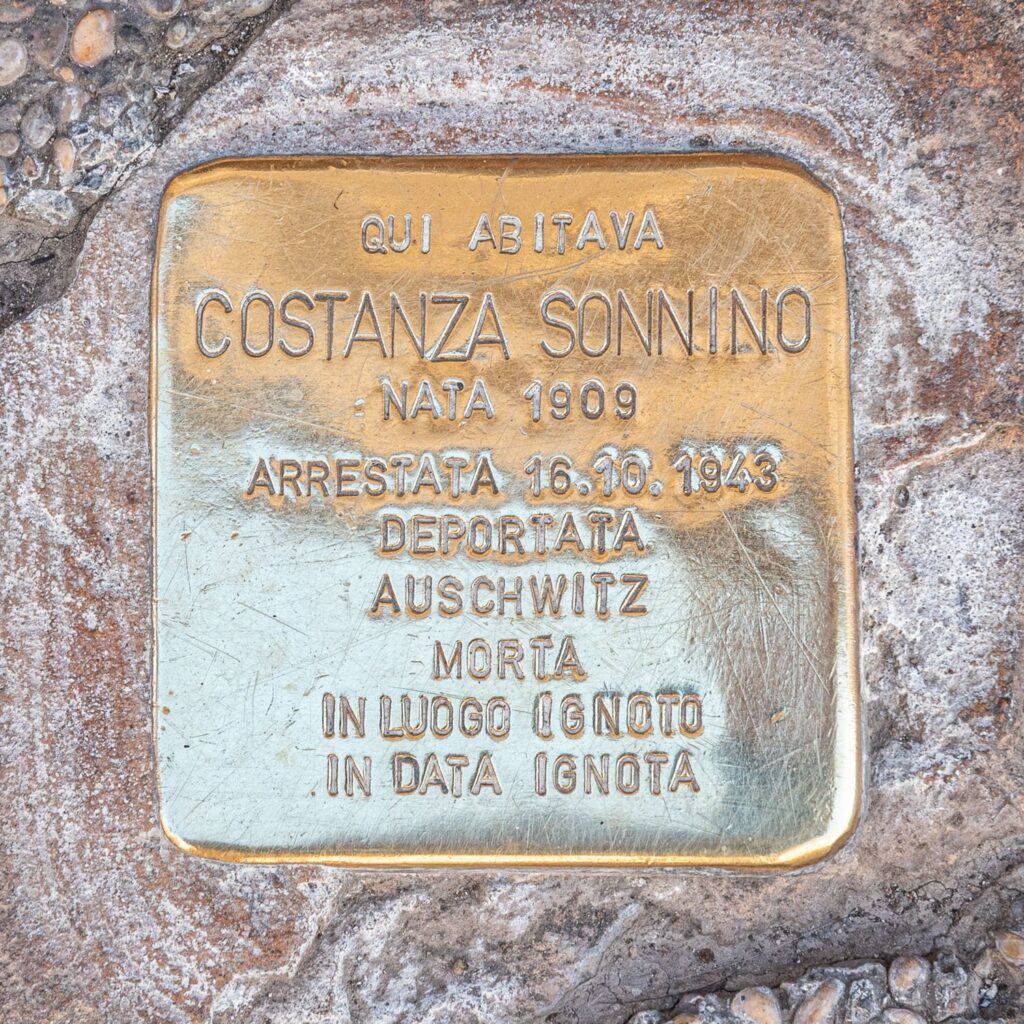
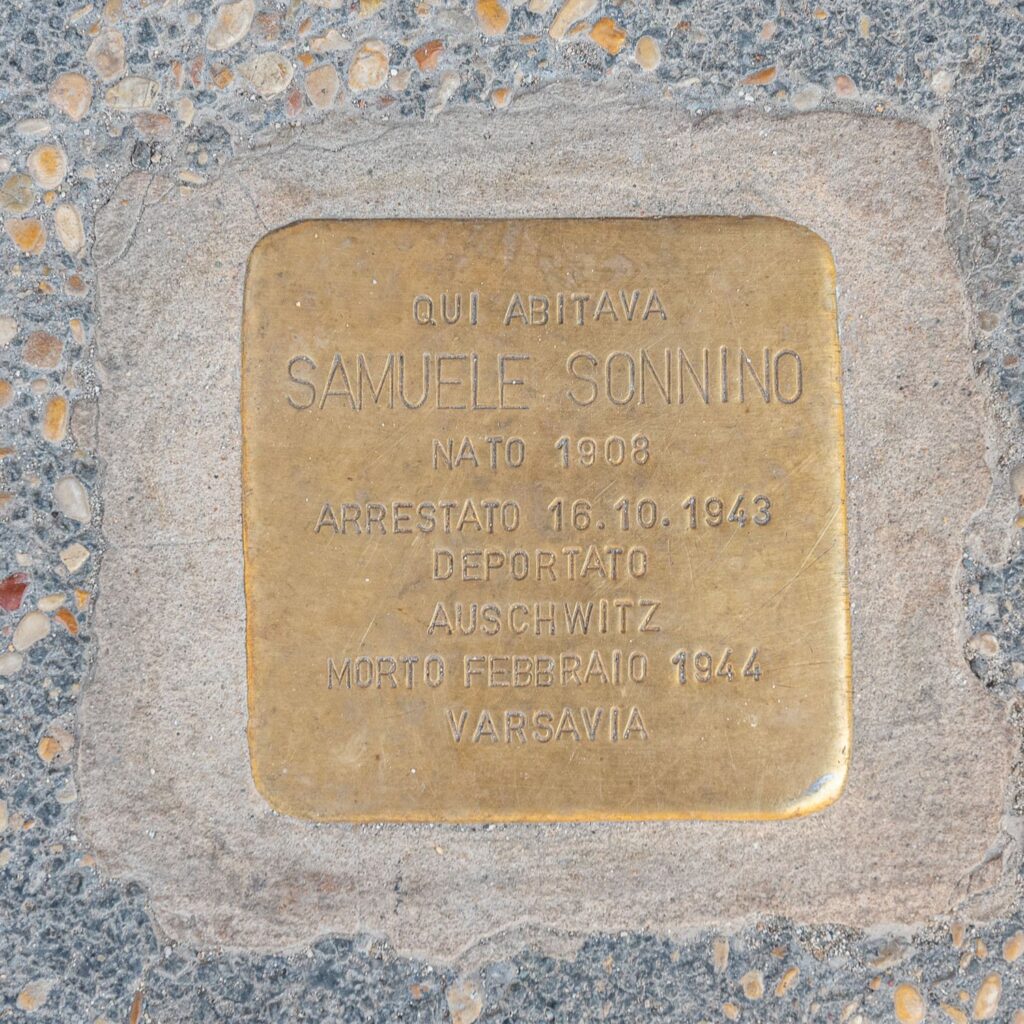
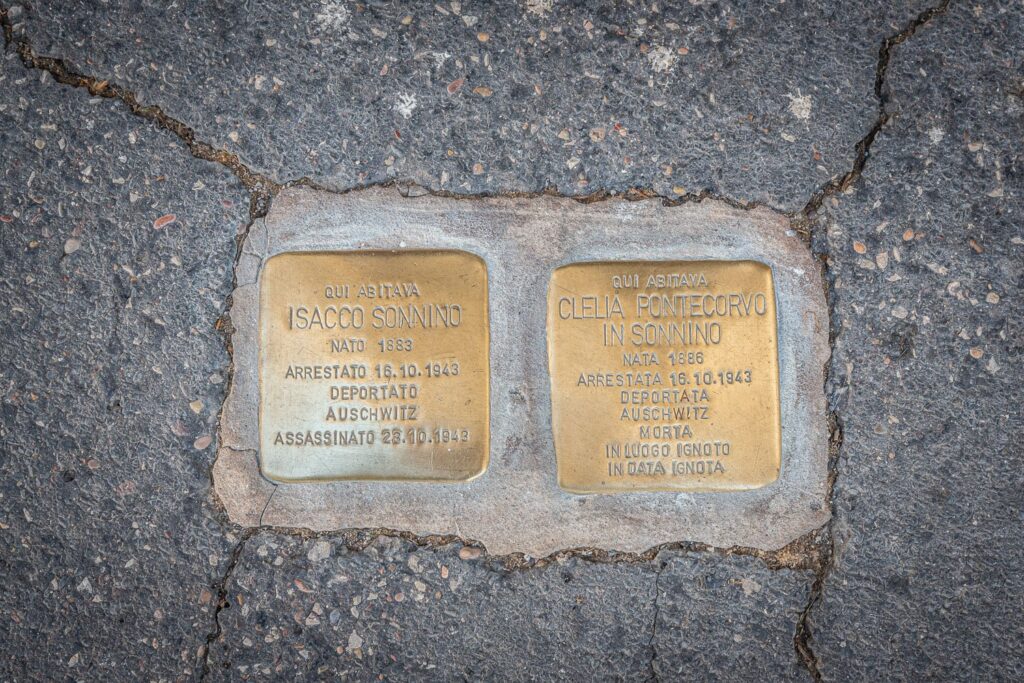
Learning About The Jewish Quarter In Rome
I have tried my best to be respectful and informative with this post, but if there is anything you think I missed or mischaracterized, please let me know. This blog isn’t a place for political discussions, but more of an opportunity to learn about the Roman and Italian cultures, and with this in mind it is important to me to be accurate.
I would recommend that you find a tour guide that specializes in Rome’s Jewish Quarter. We did on our first visit and I’m so happy we did. It is too easy to walk around looking at the buildings and not fully understand their history. If you are interested in visiting the Jewish Ghetto in Rome, here are some other places close by that you can also consider visiting:
- These Famous Fountains In Rome Are Definitely My Favorites.
- The Largo di Torre Argentina Exhibit Is More Up Close.
- Centuries Of Worshiping Took Place Inside The Pantheon.
- The Forum of Augustus – History, Tours and Tickets.
- The Quartiere Coppedè In Rome Is Waiting To Be Discovered.
- The Districts Of Rome Are All Uniquely Roman Experiences.
- More Districts In Rome, Italy That You Should Visit.
- Check Out The Bone Church In Rome, Italy.
- Even Further South: Is Garbatella, Rome Safe For Tourists To Visit At Night?
- A 3-Day Rome Itinerary Plans For Your Third Visit To Italy.
- The Monumental Cemetery Of Verano Is Another Hidden Gem In Rome.
